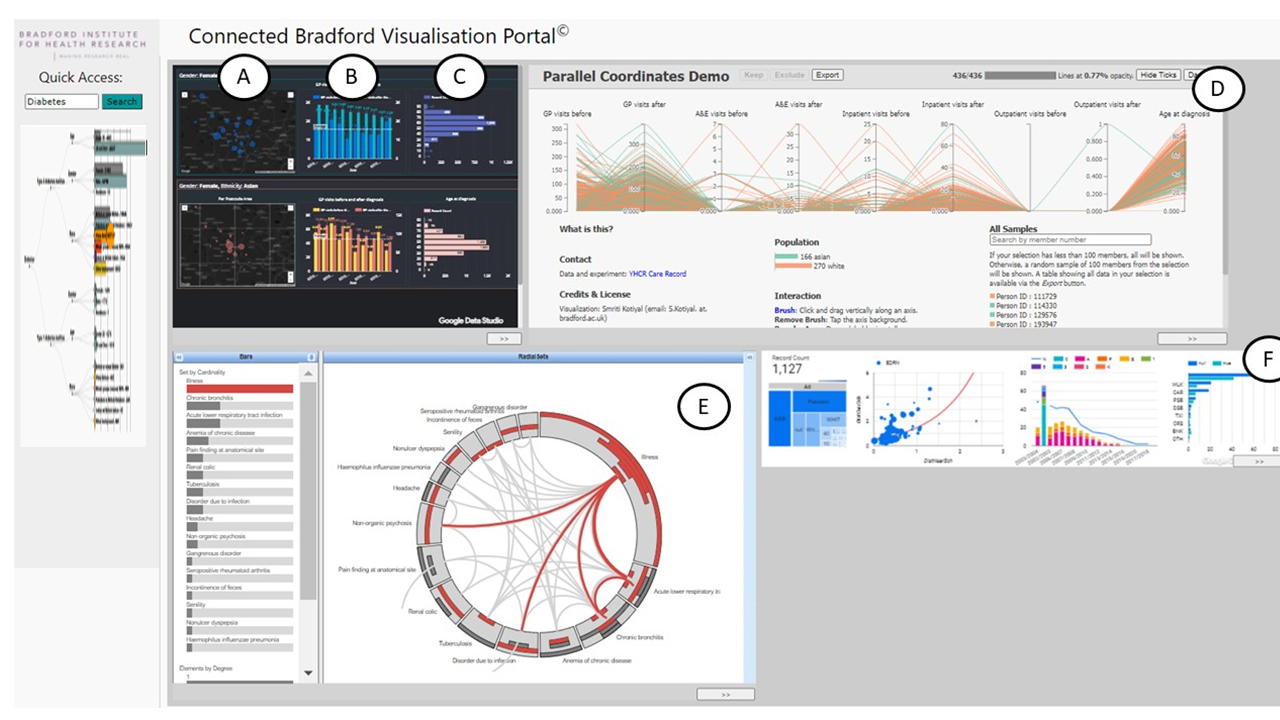Creative Visualisation Opportunities Workshops: A Case Study in Population Health
Mai Elshehaly, Kuldeep Sohal, Tom Lawton, Maria Bryant, Mark Mon-Williams
View presentation:2022-10-17T16:00:00ZGMT-0600Change your timezone on the schedule page
2022-10-17T16:00:00Z

The live footage of the talk, including the Q&A, can be viewed on the session page, BELIV: Paper Session 1.
Abstract
Population Health Management (PHM) relies on the analysis of data from several sources to account for the complex interaction of factors that contribute to the health and well-being of a population, while considering biases and inequalities across sub-populations. Visualisation is emerging as an essential tool for insight generation from data shared and linked across services including healthcare, education, housing, policing, etc. However, visualisation design is challenged by poor data connectivity and quality, high dimensionality and complexity of real-world routinely collected data, in addition to the heterogeneity of users’ backgrounds and tasks. The Creative Visualisation Opportunities (CVO) framework provides a structured approach for working with diverse communities of visualisation stakeholders and defines a set of participatory activities for the effective elicitation of requirements and visualisation design alternatives. We conducted three workshops, applying variations of the CVO framework, with over one hundred participants from the PHM domain, including clinicians, researchers, government and private sector representatives, and local communities. In this paper, we present the results of preliminary analysis of these activities and report on the perceived impact of visualisation in this domain from a stakeholders’ perspective. We report real-world successes and limitations of applying the framework in different formats (through online and in-person workshops), and reflect on lessons learned for task analysis and visualisation design in the PHM domain.